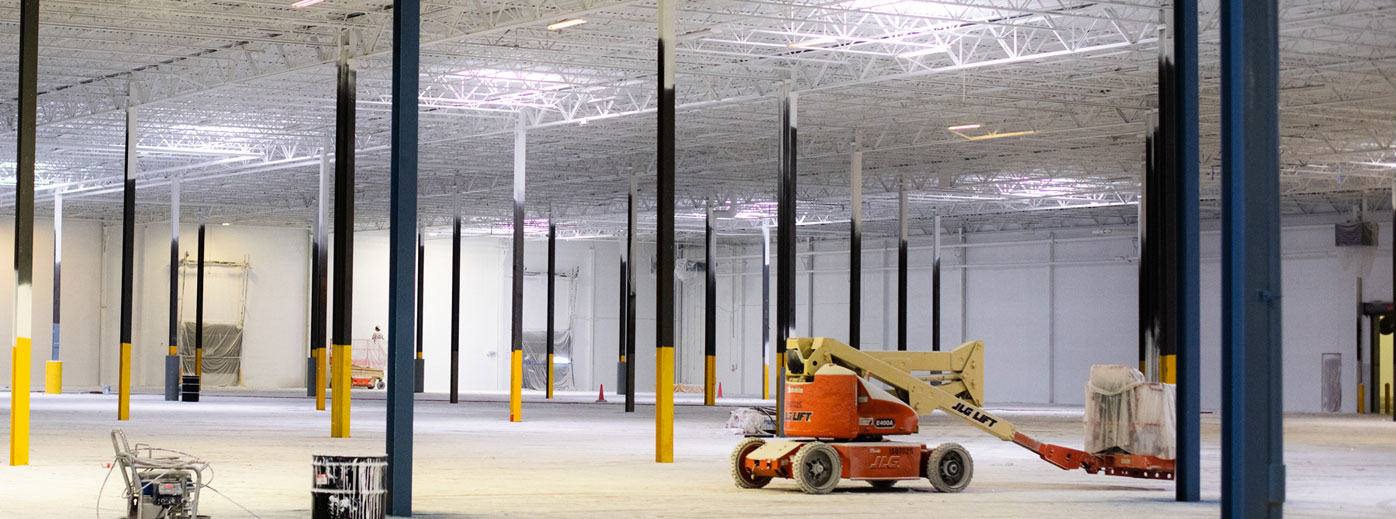Budgeting for Your Painting Project
PART 5
Industrial paint projects can run anywhere from $2,000 to $1 million.
With this in mind, facilities managers usually seek out bids from prospective contractors early in the process – starting with estimates that encompass everything they might want done, then reducing the scope of the job until it meets their budgetary needs.
Painting usually must be approved by high-level decision-makers. They want to understand the business case behind the project before they come on board.
Should you wait to start painting until you have your full budget?
It’s typically best to get started with a job as soon as possible. The sooner you get started, the sooner you can finish – and most teams find it much easier to approve half their project budget in six months rather than all of it in twelve.

Can clients estimate the total cost? If so, how?
Many clients end up spending a lot of time on “fact-finding missions” that go nowhere.
There are many different factors that influence final cost, including:
- Square footage of your facility.
- Surface preparations are required.
- The type of paints to be used.
- Number of coats to be applied.
- Equipment and personnel needed.
- Utilities like generators and water.
- Timeframe (if deadlines are a factor).
- Unforeseen issues during the project.
- Amount of congestion in the area.
- What equipment must be protected?
Needless to say, this is a lot to take in. Accurately estimating a large industrial painting project takes many years of experience. Even an expert project manager has to carefully consider all the variables and the ways the project and your business might interact.
With that in mind, the best thing you can do to protect your budget is to develop a comprehensive Statement of Work. Your SOW is the guideline all prospective contractors start with. The more detailed and accurate it is, the better it is for both your peace of mind and the bottom line.
What Can Business Owners Do To Save Money?
Aside from a great Statement of Work, there are two things you can start on right away to make your project more efficient.
- Make Areas to Be Painted Highly Available - The easier it is for the contractor to get in, out, and around the area to be painted, the sooner the work will be done and the easier it is to avoid wasting resources. This might require you to think about the best ways to retool certain workflows, but it is worth it. When all is said and done, thousands might be saved. That can make a big difference in how much you can get done.
- Make Facilities Available if Possible - It’s almost always better to give your contractor access to a water line rather than pay separate per diem fees for a water tanker. You should only avoid doing this if there are specific reasons to do so based on water costs or availability.
Another area where money can (sometimes) be saved is with an air compressor. Make sure your facility can support the CFM requirements your contractor needs. This can save you air compressor charges.
How Much Time Can You Expect Your Project To Take?
Although timeframes vary, the experience of your contractor and the total square footage to be painted give you some good insights. An effective contractor can usually manage 10,000 square feet in a weekend. For 1 million square feet, expect about a year.
Outside of square footage, the two biggest factors affecting the timeline are:
- Congestion: How difficult it is for contractors to access the area consistently to work.
- Surface Preparation: How bad surfaces currently are and what needs to be applied.
Final Budget Considerations
When it comes to choosing a contractor, the power is in your hands. Always ask what products are being used, how the surface will be prepared, and how products are being applied. Even the best products will not perform well if cheap, low-quality applicators are used.
In any collection of bids, estimates should be similar. Be cautious of high and low bidders. (This can indicate possible corner-cutting or poor material usage)
If you’d like to get a free quote from an experienced industrial paint contractor, then contact us today to get in touch with us.
Commercial Paint Project Budgeting: Right Way, Wrong Way
- Jim finds himself putting his painting project off for months as he tries to get his boss to sign off on the budget. Since no part of the work gets started, he misses deadline after deadline. Instead of spending time on a detailed Statement of Work, he picks the lowest bidder.
- Rob can’t get the full budget for his project right away but goes ahead with what he can do. By developing a detailed SOW, he has his choice of the best contractors for the job. He trims more than three months off his timeline by ensuring areas to be painted are easy to access.
Remember:
- Depending on needs, materials, and square footage, projects run $2,000 to $1 million.
- It’s essential to have a detailed Statement of Work to solicit fair bids from contractors.
- If your budget is tight, define part of a project to do right now and do the rest later.
- Once a project starts, the best way to save money is to make areas highly accessible.

